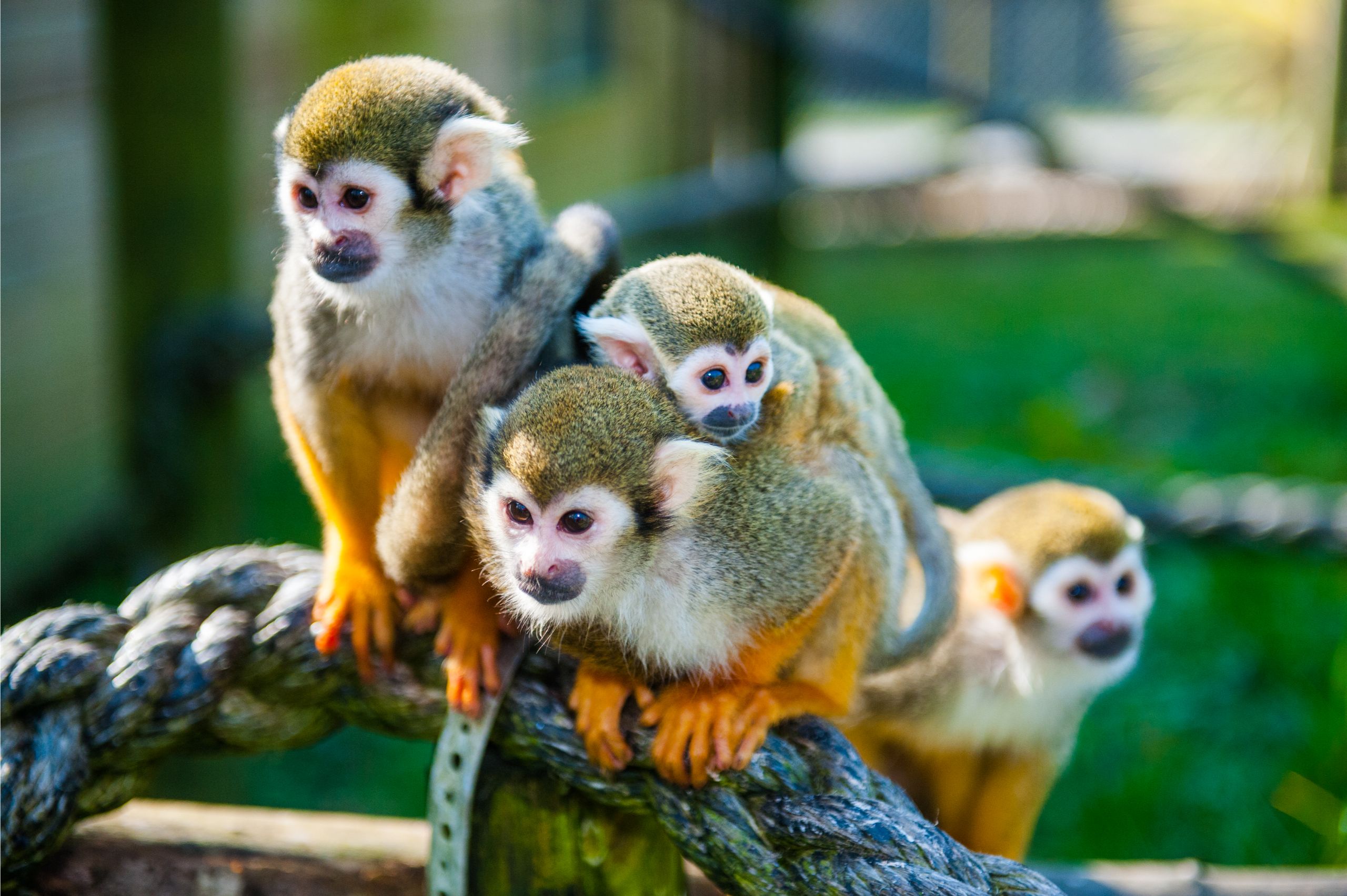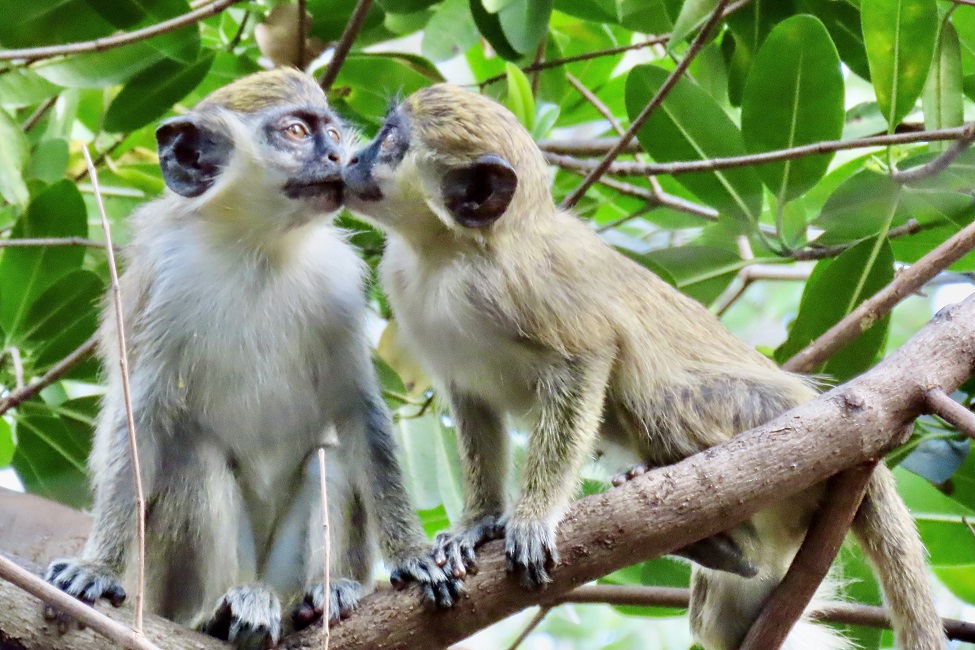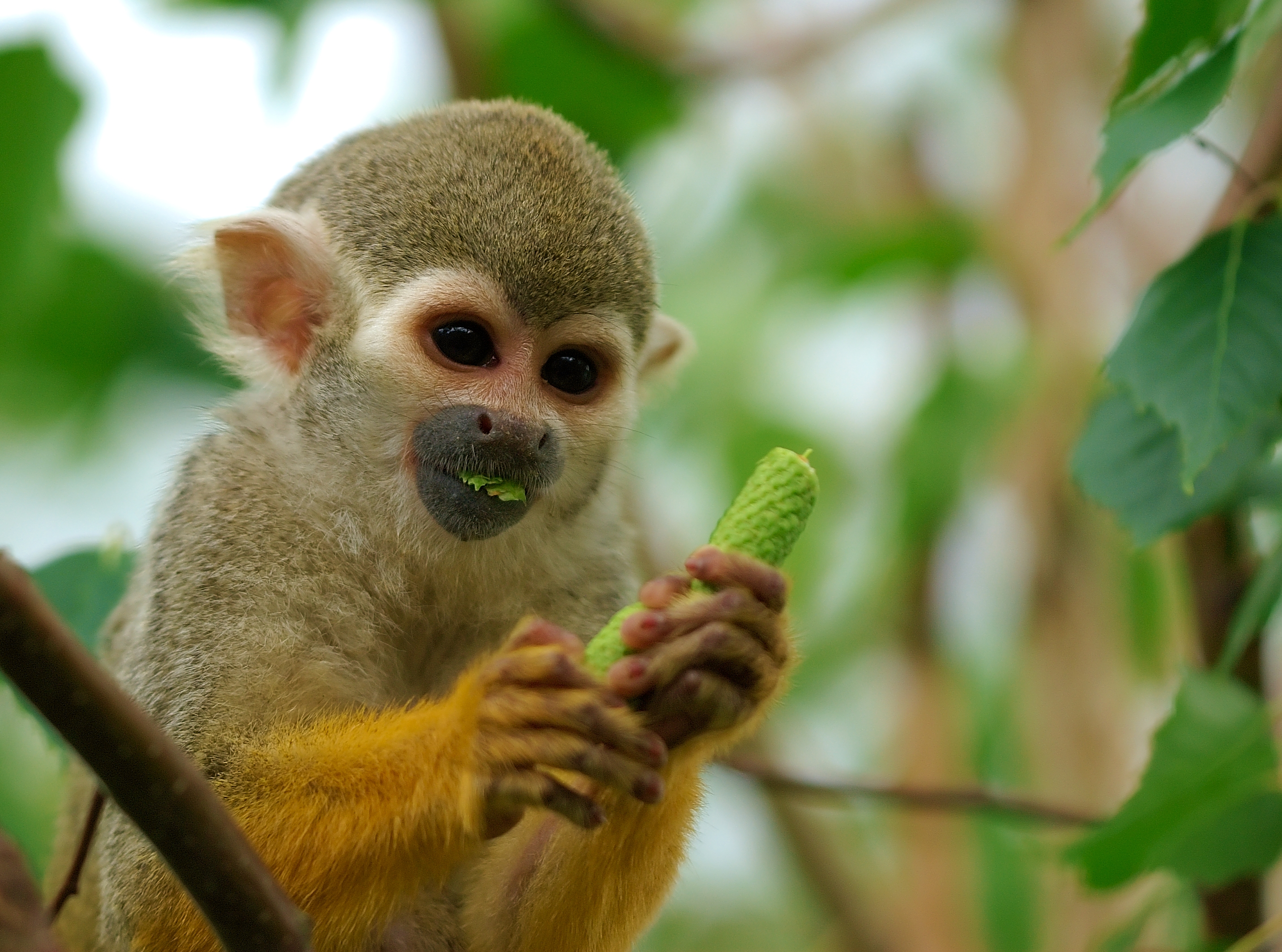Florida is home to a diverse range of wildlife, including several types of monkeys that originate from Africa, Asia, and South America. The state’s tropical and subtropical climates, as well as the availability of food and water, have allowed monkeys to thrive in Florida.
However, the monkey population has exploded in recent years, and there are now estimated to be hundreds of thousands of monkeys in the state. Some of these monkeys were introduced to Florida for scientific purposes, while others were brought in as pets.
You are reading: 6 Types Of Monkeys In Florida
In this article, we will explore the six types of monkeys that can be found in Florida, their origins, and their impact on the state’s ecosystems and human populations.

6 Types Of Monkeys In Florida
Rhesus Macaques
Rhesus macaques are a non-native species in Florida and are not protected except by anti-cruelty law. They were introduced to Florida in 1938 by a tour boat operator known as “Colonel Tooey”.
Rhesus macaques are brown or grey in coloration and have pink, hairless faces. They range in weight from 12-17 pounds with an average height of 1.5-1.7 feet.
The core population of rhesus macaques is in central Florida around the Silver River, where a boat operator first released six of them in the 1930s to attract tourists. Individual rhesus macaque sightings have occurred throughout Florida, most likely a result of roaming monkeys originating from the Silver Springs population.
Rhesus macaques pose the greatest ecological and human health threats of the monkeys in Florida. They have been known to destroy mangroves and attack humans when food is around.
Rhesus macaques in Florida have also tested positive for herpes B, a rare viral infection that can lead to severe brain damage or death if it isn’t treated quickly.
Capuchin Monkeys

Capuchin monkeys are not native to Florida but were introduced by humans at some point. They are smaller than Rhesus macaques and have lighter-colored fur.
Capuchins are small to medium-sized animals that weigh between three and nine pounds. They have long tails that are perfect for keeping their balance when moving through the trees.
These monkeys are also omnivorous, so they consume plants and animals. This diet makes Florida an ideal spot for all their needs. Capuchin monkeys often make their homes in urban areas, where they can find food and shelter.
In terms of ownership, you can own a Capuchin in Florida, but there are strict laws in place regarding the ownership of these monkeys.
Read more : 12 Types Of Aquarium Fish
Florida’s class 3 mammal license requires you to show adequate knowledge and proper care and containment of your Capuchin monkey. The no-cost license permits you to own one Capuchin monkey as a pet.
Vervet Monkeys

Vervet monkeys are gray and black with a greenish tinge, helping them blend into the trees. They are native to West Africa and were introduced into Dania Beach, south of Ft. Lauderdale, in the 1940s.
These animals escaped from the Anthropoid Ape Research Foundation, a facility that imported primates from Africa for use in biomedical research. Today, 40 descendants are broken into four troops living within 1,500 acres around the airport.
Vervet monkeys are considered to have one of the most omnivorous diets of all primates, consuming a wide variety of plants, fruits, small vertebrates, and bird eggs.
The vervet monkey population has remained stable for several decades, indicating they are capable of reproducing and persisting in Florida. While they are not considered endangered, Florida law protects vervet monkeys, so it is illegal to harm or kill them.
Vervet monkeys are prevalent throughout Africa, specifically in Angola, Botswana, Ethiopia, Kenya, Mozambique, Namibia, South Africa, Somalia, Tanzania, Uganda, Zambia, and Zimbabwe.
Common Squirrel Monkeys

Common squirrel monkeys are a group of small squirrel monkey species native to the tropical areas of South America. The term “common squirrel monkey” had been used as the common name for Saimiri sciureus before genetic research indicated S. sciureus covered at least three and possibly four species: the Guianan squirrel monkey (S. sciureus), Humboldt’s squirrel monkey (S. cassiquiarensis), and Collins’ squirrel monkey (S. collinsi).
The Ecuadorian squirrel monkey (S. cassiquiarensis macrodon), generally regarded as a subspecies of Humboldt’s squirrel monkey, had also been sometimes proposed as a separate species that had originally been included within the term “common squirrel monkey”.
Squirrel monkeys are diurnal and live in the tropical rainforests of South America, except in the southeastern coastal forests of Brazil. They prefer primary and secondary forest, gallery forest, and areas near water sources.
Squirrel monkeys are the smallest of the Primate family Cebidae and possess nails instead of claws. They are promiscuous and have no territorial disputes, with groups tending to mutually avoid one another.
Squirrel monkeys are easily kept in captivity and were once frequently sold as pets. Habitat destruction, illegal hunting, and capture for the pet trade or medical research all pose threats and problems to the squirrel monkeys.
Crab Eating Macaques
The crab-eating macaque, also known as the long-tailed macaque, is a species of macaque native to Southeast Asia. Despite its name, the crab-eating macaque typically does not consume crabs; rather, it is an opportunistic omnivore, eating a variety of animals and plants.
Read more : 10 Types Of Tetra Fish
Although fruits and seeds make up 60-90% of its diet, it also eats leaves, flowers, roots, and bark. It sometimes preys on vertebrates including bird chicks, nesting female birds, lizards, frogs, and fish, invertebrates, and bird eggs.
Crab-eating macaques are highly adaptable because they are generalist feeders with a diet consisting primarily of fruit and seeds, as well as birds, insects, stems, crustaceans, spiders, leaves, invertebrates, and bird eggs.
They are known to feed in cultivated fields on young dry rice, cassava leaves, rubber fruit, taro plants, coconuts, mangos, and other crops, often causing significant losses to local farmers.
In villages, towns, and cities, they frequently take food from garbage cans and refuse piles. The crab-eating macaque can become a synanthrope, living off human resources.
Humans and crab-eating macaques have shared environments since prehistoric times, and both tend to frequent forest and river edge habitats.
Patas Monkeys
The common patas monkey, also known as the wadi monkey or hussar monkey, is a ground-dwelling monkey distributed over semi-arid areas of West Africa, and into East Africa.
Here are some key facts about patas monkeys:
– Patas monkeys are long-limbed and predominantly ground-dwelling primates found in the grass and scrub regions of West and Central Africa and southeast to the Serengeti plains.
– The adult male patas monkey has shaggy fur set off by a white mustache and white underparts, and its build is like that of a greyhound; the female has a similar but less-striking pattern and build.
– Patas monkeys are omnivorous and quadrupedal, and they generally live in troops consisting of a single male with up to half a dozen females and their young.
– The young develop quickly, with females maturing at three years and males at four.
– Patas monkeys are the fastest primates on Earth, capable of moving at speeds up to 34 mph.
– Patas monkeys are physically adapted for life on the ground, with long legs and a body build that resembles that of a greyhound.
Patas monkeys were introduced to Florida for scientific purposes.
FAQS
1. What are the six types of monkeys in Florida?
The six types of monkeys in Florida are Rhesus Macaques, Capuchin Monkeys, Vervet Monkeys, Common Squirrel Monkeys, Crab Eating Macaques, and Patas Monkeys.
2. Are monkeys native to Florida?
No, monkeys are not native to Florida. They were introduced to the state for scientific purposes or as pets.
3. Why are there so many monkeys in Florida?
Florida’s tropical and subtropical climates, as well as the availability of food and water, have allowed monkeys to thrive in the state. Additionally, some monkeys were introduced to Florida for scientific purposes or as pets, and their populations have exploded in recent years.
4. Are monkeys dangerous to humans?
Yes, some monkeys in Florida can pose a threat to humans. Rhesus macaques, for example, have been known to attack humans when food is around. It is also illegal to feed wild monkeys in Florida.
5. What impact do monkeys have on Florida’s ecosystems?
Monkeys are not native to Florida and can pose a threat to the state’s ecosystems. They have been known to destroy mangroves and compete with native species for resources.
6. Can you own a monkey in Florida?
Yes, you can own a monkey in Florida, but there are strict laws in place regarding the ownership of these animals. A class 3 mammal license is required, and it permits you to own one monkey as a pet.
Source: https://petstutorial.com
Category: Animals










